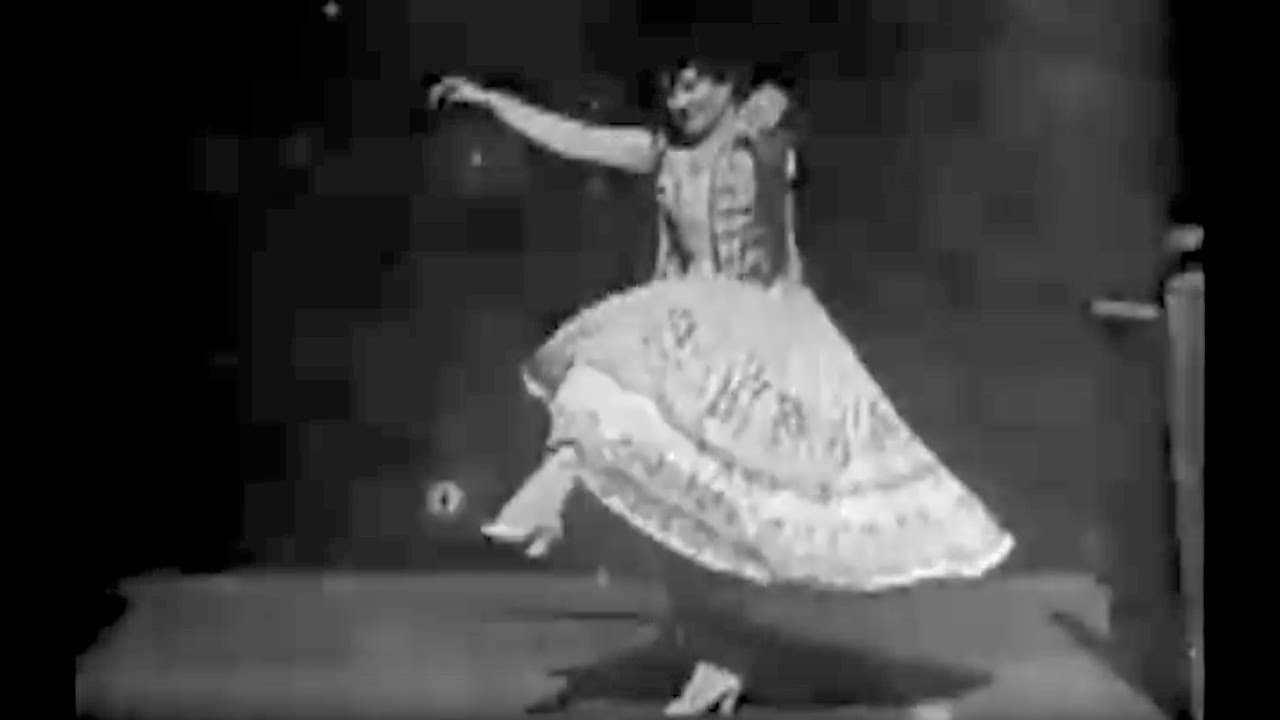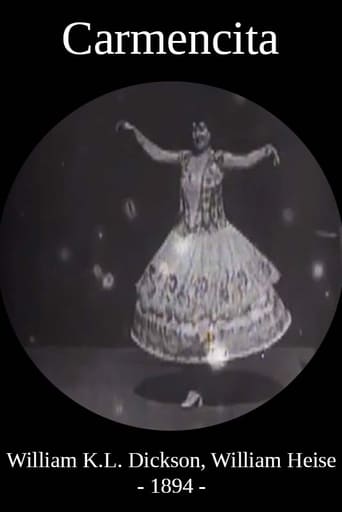

A popular theme in Edison's earliest Kinetoscope films was often dancing, which he apparently thought would be entertaining to audiences. This film is among these various dance routines the company filmed, this time featuring the Carmencita of the title doing her dance for the camera before curtsying. That is really all we see but the dance is interesting for a number of reasons. It caused censorship during its time, and while not understandable today the Victorian values of the time made it become undeniably scandalous. The dance isn't anything really interesting by itself, but apparently Carmencita made lots of money off of it, and was well known at the time. If it weren't for this movie she'd probably be forgotten today. That is another reason these early Edison pictures are interesting: they portray long-dead, long-forgotten performers. Without these 23 seconds we'd probably have forgotten all about Miss Carmencita now and nobody would be on IMDb bothering to review this. Then again, the page itself wouldn't even be there!
... View More. . . would not earn too many quarters (inflation has quintupled nickelodeon prices since Light Bulb Man's day) wearing her inverted-tea cup dress throughout this 26.06-second performance. But it's the thought that counts, and, as multiple researchers make clear, Edison and his crew viewed their invention of movies from the start exclusively as a vehicle to better satiate the male human being's lust for sex and violence in a private or semi-private setting. When you look at the early "kinetograph" parlors, the workers and clientele are solely of the male sex. While Edison was somewhat proud of the technical aspects of his moving pictures (enough so that he filmed brief snippets of men waving hats or sneezing for his wife to show to her women's clubs meetings), ALL of old Tom's money shots were of violence (boxing--then illegal in America--as well as cock fights, bear baiting, rat-on-rat action, and feline torture) and sex (filmming the women dancers of his day between their jail stints, or previously unknown strippers). If pervert Con Ed had had his way, movies would have remained a solo pursuit between a man, his peep box, and his do-hickey.
... View MoreThis short film was included several years ago in a documentary about Thomas Edison and his early movie-making experiments. It's timeless - an absolute classic!The video itself is jumpy and splotchy, and primitive by even the earliest silent film standards. But by anyone's measure, the dancer is amazingly good, and this peek into the distant past is well worth watching, if the opportunity arises.It would be nice if someone put together for commercial sale a collection of very early experimental film projects like this one. Few are likely to be as fascinating as this, but it's amazing to see how dramatically video technology has changed - and how relatively little change there has been in our entertainment preferences.
... View More"Carmencita Dancing," one of a series of Edison short films featuring circus and vaudeville acts, displayed the... um... "talents" of a zaftig belly-dancer who agreed to undulate before the camera of the famous "Black Maria" studio. The dance was originally intended to be played in a Kinetoscope, a single -person arcade viewer connected to Edison's more famous invention, the phonograph. Through a pair of crude headphones, the latter device supplied an asynchronous soundtrack of "hootchie-cootchie" music. The Kinetograph camera here employed is so new -- even to its inventors -- that director Dickson has drastically "overcranked" the film, unintentionally producing one of the first examples of slow-motion. Carmencita's titillating movements were considered by many to be scandalous. Thus, the film prompted some of the earliest discussions of film censorship.
... View More